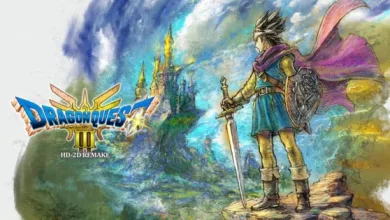Mermaid Prince Manga Review – Review

There’s a bittersweet quality to most of Kaori Ozaki‘s works, at least those translated into English – Immortal Rain, The Gods Lie, and The Golden Sheep – and Mermaid Prince is no exception. Comprised of three short stories, the book explores how we interact with the world, drawing upon Japanese folklore for One Snowy Day and the title work and focusing on how events can shape the choices we make in all three. Although they initially don’t appear to have any actual unifying theme, they still all feel representative of Ozaki’s work, and fans of her manga shouldn’t pass this single volume by.
Of the three pieces, the most unusual is One Snowy Day. It’s also the shortest and the most difficult to discuss without spoiling its most interesting element. Thematically, however, it looks at libraries and what they represent to those who use them. The unnamed protagonist is a librarian, apparently working in a small local library during the winter. On a snowy day, a father and his young son take refuge in the building, much to the horror of an older woman patron, who clearly assumes that they’re homeless and oughtn’t to be allowed around “better” people. The librarian chides her, noting that they’re reading a picture book, and gently interacts with the little boy when his father falls asleep. This kindness informs the tale’s denouement, noting that libraries are spaces of quiet safety, a refuge from the literal or metaphorical storms – and maybe even a source of inspiration for many people. Lightly touched with folklore, One Snowy Day more than earns its place between its two-chapter fellows in the book, and it’s the story that I found myself thinking about the most after finishing the volume.
On the same folkloric front, the title story, Mermaid Prince, is rooted in Okinawan legend. The story takes place near (and in) a cave in Okinawa that really exists: The Mermaid’s Grotto. Primarily accessible only by scuba divers, in Ozaki’s version, the grotto is tied to a legend about a mermaid frequenting the spot who will grant one wish to anyone who manages to meet her. This may be tied to a legend from a nearby beach, where a mermaid statue sits; in the 1770s, she is said to have saved a village from a tsunami. (Mermaid manga aficionados may recognize this as a similar folktale used in Mermaid Scales and the Town of Sand.) Mugi, a boy in either early high school or late middle school, has recently moved to the island where the grotto is located, and he’s less than thrilled. His older sister is his legal guardian, and she recently married a local dive instructor, uprooting Mugi. While Matori, a girl in his class, tries to bond with him, Mugi is devoted to being unhappy, feeling hemmed in by his sister’s worries about his asthma as well as the damp heat of the island. The two-chapter tale is about belonging to a time and place and discovering what makes a new situation work, and it uses the dynamics of moving to a small town well. (I admit to some surprise that the translation used “mainlander” rather than “off-islander” to describe Mugi, but the latter may be more unique to my locality than I thought.) More importantly, the mermaid element is very well done, and Ozaki’s take on the aquatic beings is a fascinating blend of horror and fantasy imagery. The mermaid is equally beautiful and terrifying, and that sums up both Mugi’s feelings about his new situation and the creature herself.
Ametsukigahara, the first story in the book, is, if not the strongest, then at least the best distillation of its themes. It’s also the only one devoid of fantasy elements, instead taking a sometimes harsh look at a teenage girl trying to sort things out. Akari starts the tale in her third year of middle school, where her teachers are decidedly unimpressed with her career choices, which include things like “pirate king.” Her best friend Fumika plans to attend a high school that Akari feels she’s not smart enough for (or at least not motivated enough to apply to), but the final blow is when Fumika starts dating Kaji. Suddenly, Fumika is all about Kaji, causing Akari to lash out, especially when she has a terrible experience on the train: she’s groped while Fumika and Kaji are just a couple of seats away.
Akari’s reaction to being assaulted is an excellent study of rage. After lashing out at Fumika, she hides in a bathroom stall, viciously cutting her underwear to shreds with a craft knife before flushing the pieces down the toilet, triumphantly standing over the Japanese-style device. Her rage is palpable, and with each cut of the knife, each rip in the fabric, she seems to be destroying a piece of a society that, in her mind, values nice girls who date smart boys over awkward girls who are molested, unnoticed, on public transportation. Akari protected Fumika before she started dating Kaji when she was afraid of gropers. Then Fumika sat giggling with her boyfriend while Akari was harassed right beside her.
Taken in sequence, the three stories in Mermaid Prince all show a different sort of emotional outburst. Akari is violently angry, ultimately leading her to find a safe way to express her feelings. The librarian is quietly determined, treating the marginalized with kindness when others turn up their noses. And Mugi breaks through his own shell of hurt to do something selfless and to make an effort to at least try, even when his first instinct is to snap at those who reach out a hand to him. Ozaki never suggests that one path is better than the others. She simply lays the stories out, draws them cleanly, and leaves it up to us to take what we will. Allowing readers to draw their own conclusions, as her characters do, is perhaps the perfect theme for this collection.
Source link
#Mermaid #Prince #Manga #Review #Review


